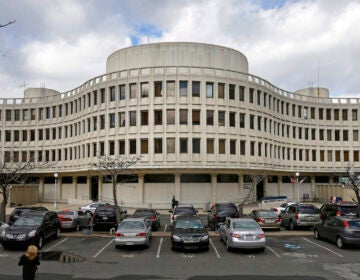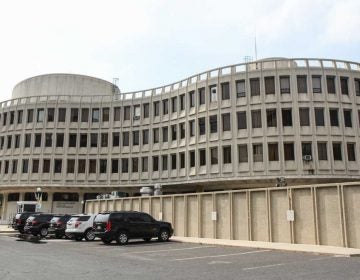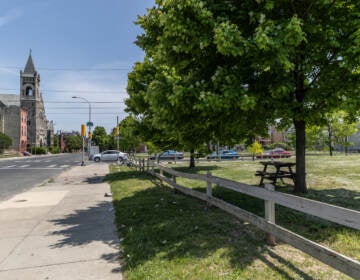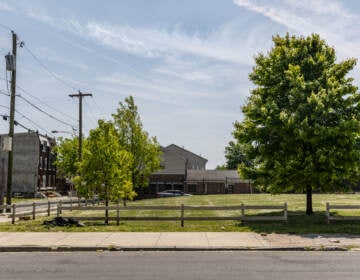The Roundhouse moves closer to historic preservation with committee vote
The curvy building is considered both an architectural marvel and a symbol of police brutality.
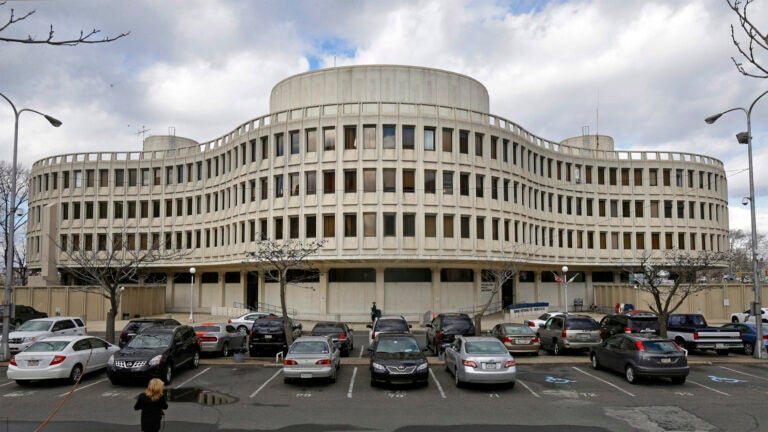
Philadelphia Police Department’s former headquarters building at 7th and Race streets. (AP Photo/Matt Rourke)
The former Police Administration Building is one step away from becoming a historically designated property.
A committee of the Philadelphia Historical Commission has unanimously approved the midcentury building, commonly referred to as the Roundhouse, for inclusion on the Philadelphia Register of Historic Places, an inventory of properties that cannot be legally demolished without commission approval.
“It’s such a significant building,” said committee member Suzanna Barucco during Wednesday’s meeting. “I know that there will be a use found for this building.”
The full commission is expected to vote on the nomination at its next meeting on Oct. 13. If approved, the body will have jurisdiction over the exterior envelope of the building at 7th and Race Streets, as well as part of the site. The adjacent parking lot was not part of the nomination.
The commission typically approves nominations with committee support, though there are occasional exceptions.
The designation process unfolds as the city moves toward selling the Roundhouse, which served as police headquarters for six decades before closing last year. The decision prompted a monthslong community engagement process that garnered considerable support for preserving one of the city’s more notorious buildings.
While the Roundhouse was designed to usher in a new chapter for the Philadelphia Police Department, the building later became a symbol of police brutality, marring the progressive ideals the city hoped the project could embody and foster.
Many of the residents who participated in the community engagement process said they wanted to see that complicated history recognized in the site’s next life.
City spokesperson Bruce Bohri said there is currently no timeline for releasing a request for proposal, in part because next month’s commission vote would impact how the project is pitched to potential developers — if the nomination is approved.
“The RFP would reflect that this is a building on the Philadelphia Register of Historic Places and would make clear which parts of the property are under the oversight of the Historical Commission. Changes to the building would require review,” said Bohri in an email.
‘No dark side’
Construction on the Roundhouse was completed in 1962, a time when the city was working to modernize its municipal services. Giving the police department its own space — independence — was part of that effort. The force had previously been headquartered in the basement of City Hall, a location reformers thought encouraged too much political influence within the force.
Amid a downturn sparked by deindustrialization, city officials were also searching for ways to make Philadelphia a place people wanted to stay. Architecture was one of the solutions they hoped would stoke that pride.
Enter Geddes, Brecher, Qualls & Cunningham, the Philadelphia-based architecture firm tapped to design the department’s new headquarters on Race Street.
Gleaming white when it first opened, the Roundhouse graced the covers of major architectural magazines for its use of what’s known as precast concrete. It’s one of only a handful of buildings from that era to employ the technology, which enabled the building’s engineers to create complex components with extreme precision.
All of the building’s individual parts, more than a thousand in all, were fabricated off-site, then assembled at 7th and Race Streets. The positioning of the Roundhouse was meant to make it appear as if the building was embracing Franklin Square Park across the street, as well as the city as a whole.
“You have an openness all around the building. There’s no back to this building. There’s no dark side to this building,” Jack Pyburn, an Atlanta-based preservation architect, told WHYY News last year.
In 1968, just a few years after the Roundhouse opened, Frank Rizzo became Philadelphia’s police commissioner. During his time as the city’s top cop, the department became notorious for its use of violence, often against the city’s Black community.
Fast forward to today, and the building is better known for the painful experiences people endured while they were locked up inside, including at the hands of corrupt homicide detectives during their interrogations.
Committee members acknowledged this complicated history during Wednesday’s meeting, with some saying it was because of it that the Roundhouse deserves to be on the city’s register of historic places.
“Unfortunately, time and again, the hopes that have been pinned on architecture to reform human nature have proven to be unsuccessful. But I hope going forward, this building will be able to carry its original progressive positive intention to its future use,” said committee member Emily Cooperman.

Subscribe to PlanPhilly
WHYY is your source for fact-based, in-depth journalism and information. As a nonprofit organization, we rely on financial support from readers like you. Please give today.




